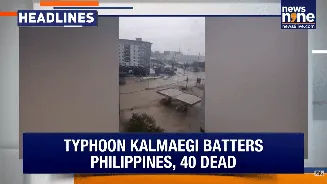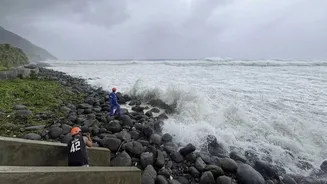Initial Impact and Casualties
Typhoon Kalmaegi, which struck the Philippines, resulted in widespread damage and a significant loss of life. Reports indicated that the typhoon caused
at least 58 fatalities across the country. This included a combination of various incidents tied to the storm, such as infrastructure damage, landslides, and flooding that resulted in fatalities. The storm's impact was widespread, and the search and rescue operations were intensified to find any survivors or additional victims in the aftermath. The Philippines, an archipelago nation, is frequently exposed to typhoons, making it imperative that disaster preparedness and response mechanisms are robust. The damage inflicted by Typhoon Kalmaegi once again highlighted the importance of strengthening these measures and offering support to the affected population. The destruction also included homes, businesses, and essential infrastructure, which further complicated the immediate aftermath.
Storm's Destructive Power
The severity of Typhoon Kalmaegi's impact on the Philippines was clear due to its strong winds and torrential rains. The storm was categorized as a formidable weather event. The intense rainfall caused flash floods and landslides in various areas, especially in regions with vulnerable terrain. Houses were wrecked, agricultural land was destroyed, and communication lines were disrupted. The combination of wind and rain destroyed bridges, rendering certain regions isolated. Transportation was severely affected, and rescue teams struggled to reach the most impacted areas. The storm’s forceful nature added challenges to relief operations. The overall effect of the storm was a serious humanitarian crisis, with thousands of individuals displaced and in need of shelter, food, and medical assistance. The economic consequences were also substantial. The government and international organizations mobilized resources to address the immediate needs and begin the process of reconstruction.
Vietnam: Approaching Threat
After hitting the Philippines, Typhoon Kalmaegi proceeded on its course towards Vietnam. Authorities in Vietnam commenced preparations to cope with the anticipated impact of the storm. Coastal regions were particularly vulnerable, and evacuations were planned. The Vietnamese government issued warnings and advisories, urging residents to secure their belongings and seek safe shelter. It was expected that the storm might bring heavy rainfall, strong winds, and the likelihood of flooding and landslides. The preparations were crucial to lessen the potential damage to properties and prevent fatalities. Disaster management teams were mobilized, and they were ready to provide relief and rescue efforts. The shift in the storm's trajectory provided a chance for communities to prepare and take preventive steps. The storm’s approach was a reminder of the hazards posed by such events and the need for proactive disaster management strategies in the region.















